As soon as the fire was discovered, 9 Japan Airlines flight attendants asked everyone to stay calm, informed the pilot, and proactively opened the emergency door to evacuate passengers.
Japan Airlines on January 3 provided details of what happened inside the Airbus A350 after it collided with a Coast Guard patrol plane at Tokyo's Haneda Airport a day earlier. The A350 was preparing to land after a trip from New Chitose Airport in Hokkaido, northern Japan.
According to Japan Airlines, after the collision, the A350 slid along the runway for about a kilometer before stopping. The pilot in the cockpit did not notice the fire, but the flight attendants noticed the plane was on fire.
At this time, smoke began to fill the cabin, some passengers showed signs of panic, screaming and calling for help. 9 flight attendants asked everyone to stay calm, instructed them to bend down, use masks or scarves to cover their noses and mouths, and called for cooperation while waiting for the plane to come to a complete stop.
The moment passengers escaped in the air crash at Haneda airport, January 2. Video : X, ANN
The chief flight attendant then called the cockpit, announcing that the plane was on fire and that passengers needed to be evacuated immediately. According to procedure, flight attendants need permission from the pilot before opening the emergency exit.
The A350 has eight side exits and the evacuation began from the two front exits. However, five of the six remaining exits in the middle and rear of the aircraft were unsafe to escape from due to the fire, leaving only one exit on the left rear untouched by the fire.
But the intercom system was down at the time, so the flight attendants couldn't get the pilot's approval to open it. In the dire situation, the flight attendants took the initiative to open this door and activate the emergency slide to help passengers quickly escape.
This decision is considered in line with standard evacuation procedures, because in an emergency situation, flight attendants can immediately activate the emergency exit and evacuate without waiting for the captain's command to save time.
All passengers followed the flight attendants' instructions and quickly made their way to the emergency exits, with visibility limited by the thick black smoke. No one stopped to retrieve their carry-on luggage, which could have hampered the evacuation.
The captain was the last person to leave the plane at 6:05 p.m., and the evacuation was completed within 18 minutes of landing. Japan Airlines said all 379 people on board were safe, and that the crew members always paid attention to passenger safety during the process and made decisions on their own without waiting for instructions from the ground.
Japan's transport ministry said the evacuation procedures by Japan Airlines were "properly carried out". International aviation experts also praised the flight attendants' response, saying their calm and professionalism contributed to the miracle.
The airline also said that before the collision, all three pilots on the A350 did not see the Coast Guard patrol plane moving onto the runway, so they did not consider the option of aborting the landing.
The airline said it could not yet explain why the pilots did not see the patrol plane. Some experts said the patrol plane was too small compared to the A350, making it difficult to detect at night. In addition, the design of the wing section above the fuselage also obscured its interior lights when the A350 pilots looked down from above.
The collision also caused the patrol plane to catch fire, killing all five people on board. The pilot of the patrol plane was the only survivor who managed to escape. The Coast Guard plane crashed while en route to deliver relief supplies to an earthquake-hit area in central Japan.
The Japan Transport Safety Board opened an investigation into the crash yesterday. Investigators plan to question the captains of both planes.
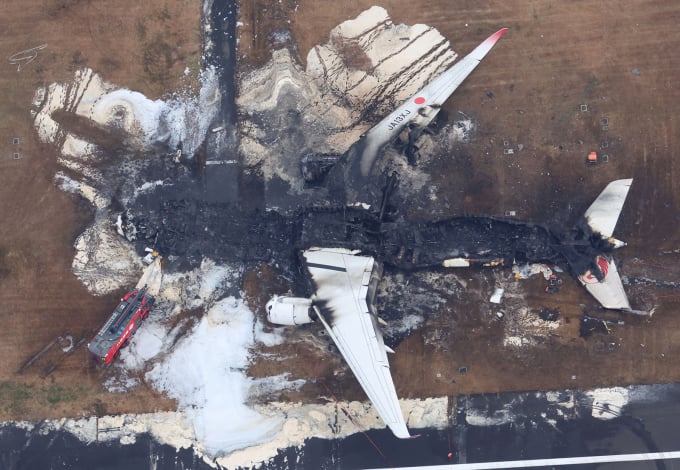
A Japan Airlines A350 plane burned on the runway at Haneda Airport in Tokyo after a collision on January 2. Photo: AFP
Takuya Fujiwara, an official at the Japan Transport Safety Board, confirmed that the A350 had been cleared by air traffic control to land. The transport ministry also released audio recordings of communications between air traffic controllers and pilots, showing that the passenger plane was cleared to land and the patrol plane was asked to move to a holding position near the runway.
According to the recording, the air traffic controller announced that the patrol plane would take off first and asked the plane to move to the waiting point close to the runway at position C5.
However, the captain, Major Genki Miyamoto, 39, appeared to have misunderstood an air traffic control order to move to the C5 holding point on the runway. Officials from the Japan Civil Aviation Authority said that the recording showed that the coast guard plane had not been cleared to take off before the accident.
Huyen Le (According to NHK , AFP )
Source link


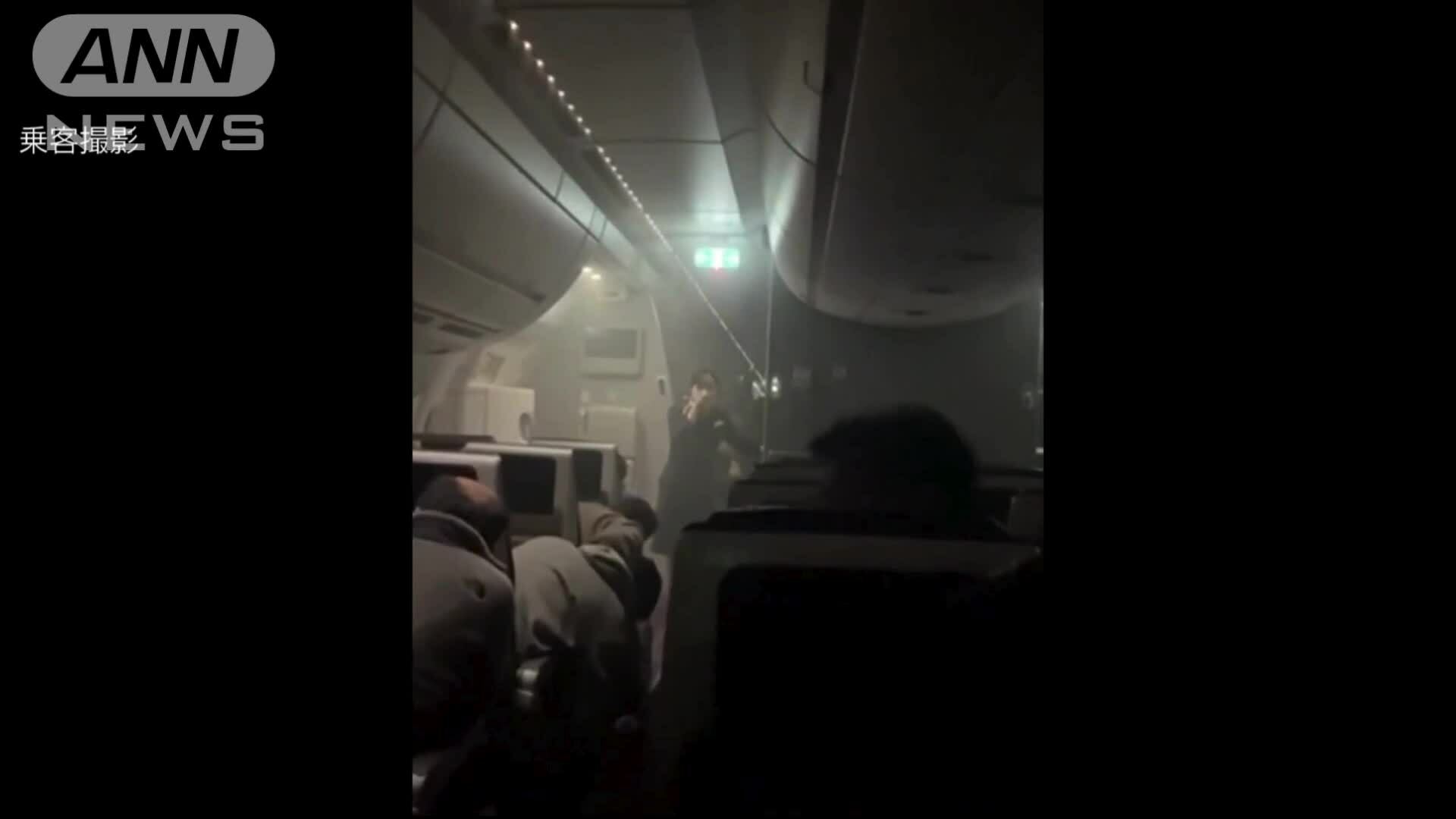

![[Photo] Students of Binh Minh Primary School enjoy the full moon festival, receiving the joys of childhood](https://vphoto.vietnam.vn/thumb/1200x675/vietnam/resource/IMAGE/2025/10/3/8cf8abef22fe4471be400a818912cb85)

![[Photo] Prime Minister Pham Minh Chinh chairs meeting to deploy overcoming consequences of storm No. 10](https://vphoto.vietnam.vn/thumb/1200x675/vietnam/resource/IMAGE/2025/10/3/544f420dcc844463898fcbef46247d16)


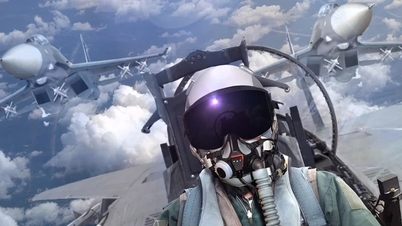






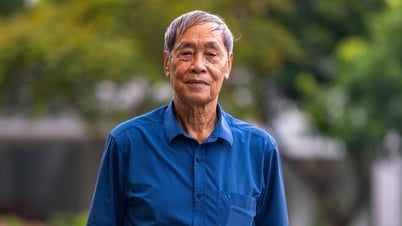

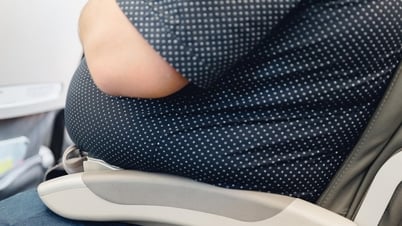





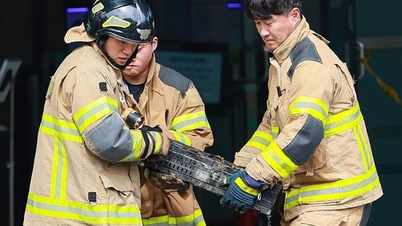






























































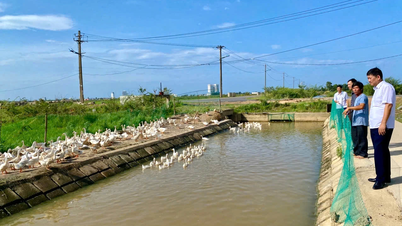



















Comment (0)